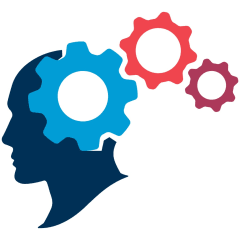Interpreters and translators are integral to bridging linguistic and cultural divides, though their roles and methods differ significantly in how they facilitate communication across languages.
Interpreters
Interpreters play a vital role in facilitating real-time communication between speakers of different languages. Their work is immediate and dynamic, requiring them to quickly and accurately convey spoken or signed messages. Simultaneous interpreters translate in real-time as the speaker talks, often using specialized equipment in soundproof booths for large conferences or international meetings. This type of interpreting demands exceptional listening and speaking skills, as well as the ability to maintain concentration for extended periods.
Consecutive interpreters, on the other hand, translate after the speaker pauses, allowing for a more detailed and accurate interpretation. They are commonly found in settings like medical appointments, legal proceedings, and business negotiations where precision and clarity are critical. Interpreters must also navigate cultural nuances and idiomatic expressions to ensure accurate communication across languages, making their role not just about language proficiency but also cultural understanding and sensitivity.
Interpreters may work in diverse environments including hospitals, courtrooms, schools, and international organizations. They may also work remotely via video conferencing platforms, providing flexibility in their work arrangements. The profession requires continual professional development to stay updated with language trends, terminology, and advances in interpreting technology, ensuring they can effectively meet the communication needs of their clients and audiences.
Translators
Translators focus on written communication, converting texts from one language to another with accuracy and clarity. Their work allows for thorough research and revision to ensure the translated content maintains the original meaning and intent. Translators often work with technical, legal, literary, or medical documents, requiring them to have specialized knowledge and vocabulary in these fields.
Technical translators, for example, translate manuals, technical documents, and scientific papers, requiring not only language skills but also a deep understanding of technical terminology and concepts. Literary translators work on books, poems, and other literary works, preserving the style and cultural nuances of the original text. Legal translators handle contracts, court documents, and legal correspondence, ensuring precise translation of complex legal terminology.
Translators typically work independently or for translation agencies, often in quiet environments conducive to concentration. They may collaborate with editors and subject matter experts to ensure accuracy and quality in their translations. The profession demands strong writing and research skills, attention to detail, and the ability to adapt language and style to suit the target audience and context.
Key Differences
Interpreters primarily work with spoken or signed language in real-time, whereas translators focus on written texts, allowing for more time to refine their translations. Interpreters must think quickly and accurately under pressure, whereas translators have the luxury of reviewing and revising their work. Interpreters often work in dynamic settings such as conferences and legal proceedings, while translators typically work in quieter environments like offices or home offices.
Both professions require a high level of language proficiency, cultural competence, and specialized knowledge in their respective fields. They play important roles in global communication, ensuring that language barriers do not hinder understanding and collaboration across cultures.

